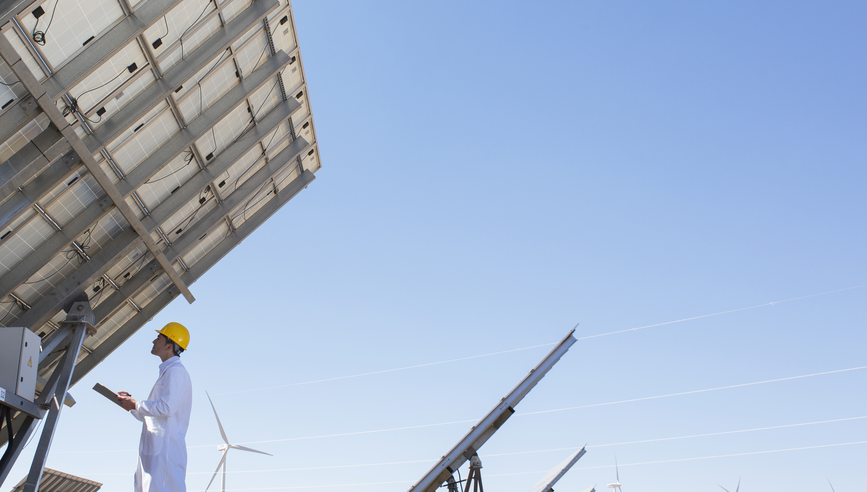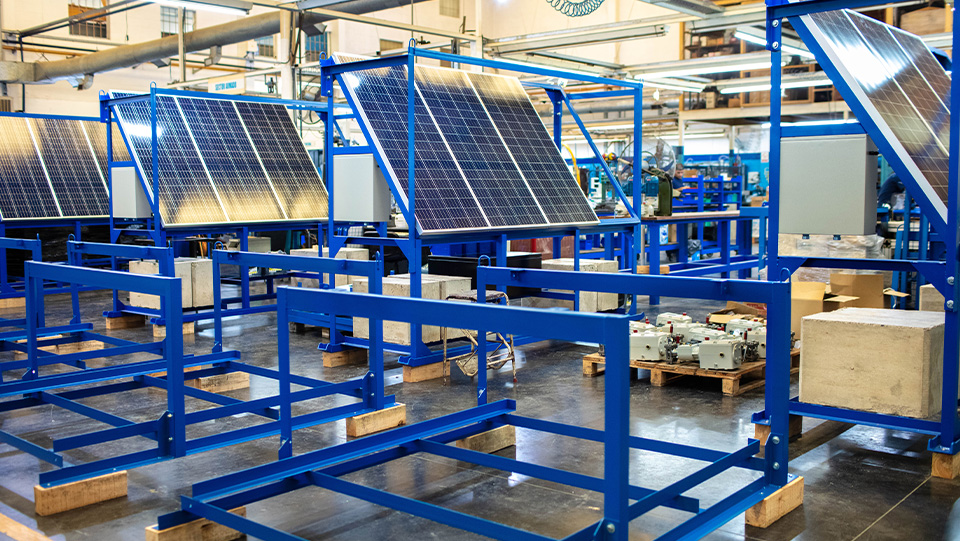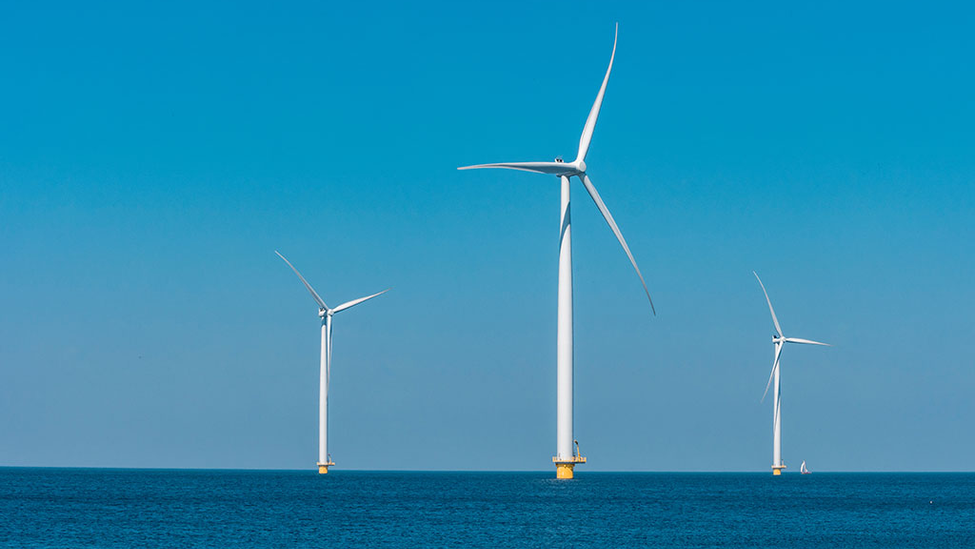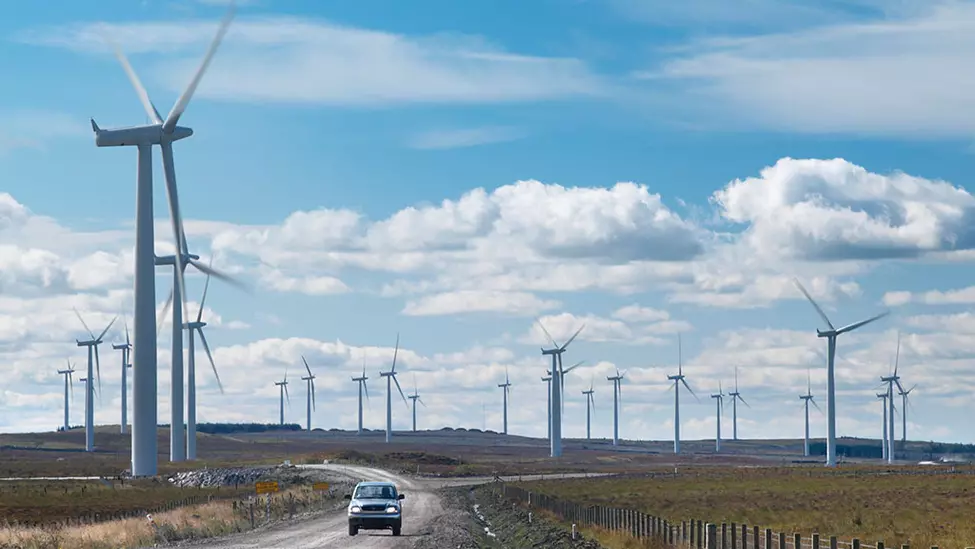Predictive Maintenance at Solar and Wind Installations to Reduce Risks and Downtime


With solar and wind installations, new technology is fueling an evolution from reactive to predictive maintenance. Artificial Intelligence (AI), connected sensors and data and analytics can help prevent costly downtime and help employees avoid hazardous emergency repair work. The market for digital services in renewable energy is predicted to grow to nearly $90 billion by 2030.1
As wind and solar energy continue to shrink the gap for both price and performance with conventional energy sources,2 smart tech has the potential to be a powerful competitive advantage. An automated drone fleet can reduce the inspection time of an offshore wind farm. Remote sensing, powered by the Industrial Internet of Things (IIoT), can trigger predictive maintenance activities to extend the life expectancy of gear boxes, bearings and other equipment.
With an interface on a computer or a smartphone, remote sensors can provide alerts in real time, potentially predicting issues in advance of a problem. Employees can proactively order parts, schedule the necessary maintenance outage and document actual conditions to create robust equipment history data. Over time, AI can monitor and look for patterns and trends in the data to better predict and potentially optimize future maintenance and performance activities.
This technology is cutting maintenance costs down significantly for operators. For example, a wind operator can identify a condition and can decide to wait for a low-wind period to implement a repair. Early detection can reduce downtime and help the wind operator to plan ahead instead of operating in crisis mode.
Data across locations can bring actionable insights to solar and wind installers
The ability to take a holistic approach to evaluating data across all assets and locations is perhaps one of the biggest advantages for solar and wind installations. Collecting data points for an entire fleet, rather than a single turbine, offers installers the potential to apply insights at scale. If a component of a turbine breaks down, for example, maintenance workers can preemptively examine other similar components, rather than waiting for another failure to occur.
“With traditional SCADA (Supervisory Control and Data Acquisition) systems, there were limits on the ability to interpret the data,” said Bill Barbato, a Travelers Risk Control professional. As a result, the system alarms indicated the need for corrective action, rather than alerting operators before damage had occurred. “Now, with machine learning, more data can lead to better analysis and greater accuracy. The systems can recognize patterns, with input from operators to help guide learning.”
Installers can conduct remote continuous monitoring, including oil sampling, quality monitoring and remote vibration monitoring. Connecting devices allows for collecting and analyzing data to potentially detect trends. By applying AI, it’s possible to employ machine learning and create predictive models that can reduce the potential for unforeseen failures and ultimately reduce overall costs.
Preventive and predictive maintenance combine for better outcomes
It’s important to note that smart technology does not replace the need for traditional maintenance programs at wind and solar installations. “Some of the best maintenance programs we’ve seen involve the installation owner using predictive maintenance to anticipate issues and help establish the frequency of that maintenance,” Barbato said. “The systems are getting so much better at telling people what’s wrong.”
Overrelying on technology can lead to issues, however, Barbato cautioned. There’s the potential for monitoring equipment to fail to indicate a problem, or for a maintenance team to fail to respond in a timely and appropriate way, which can lead to damaged equipment.
There is the potential risk that operators and maintenance teams will suffer from “alarm fatigue” if systems provide frequent alerts. Having policies in place regarding how employees respond to alarms can help mitigate these risks.
Work with experienced professionals
With a long history of helping support and protect renewable energy companies, Travelers brings a wealth of experience and value to our solar and wind customers. Our national breadth, local presence, and deep risk expertise and resources are designed to provide an advantage to companies in the rapidly evolving field of renewable energy. We offer unique experience and technical proficiency that can help renewable energy businesses assess and manage risk. Our deep industry knowledge enables us to deliver outstanding service, quality products and customized solutions to our clients – particularly in the practice of risk management.
Unlike many other carriers who contract out to third-party generalists, Travelers has in-house Risk Control services, which are at the core of the unique value we provide. Our insights have been developed from a wealth of proprietary data and extensive experience collected over time. As one of the largest Risk Control departments in the industry, the Travelers Risk Control team can provide a variety of resources to help our customers.
In the event of a wind or solar claim, Travelers has specially trained Claim professionals who understand the manufacturing, installation and technology processes associated with wind and solar energy. Travelers also has a Forensics Lab staffed with forensic engineers experienced in wind and solar accident reconstruction.
Travelers can share best practices and trends in solar and wind installation maintenance, help your company understand ways to avoid issues that could take your wind and solar installation offline, and help you protect your organization with renewable energy insurance.
Sources



